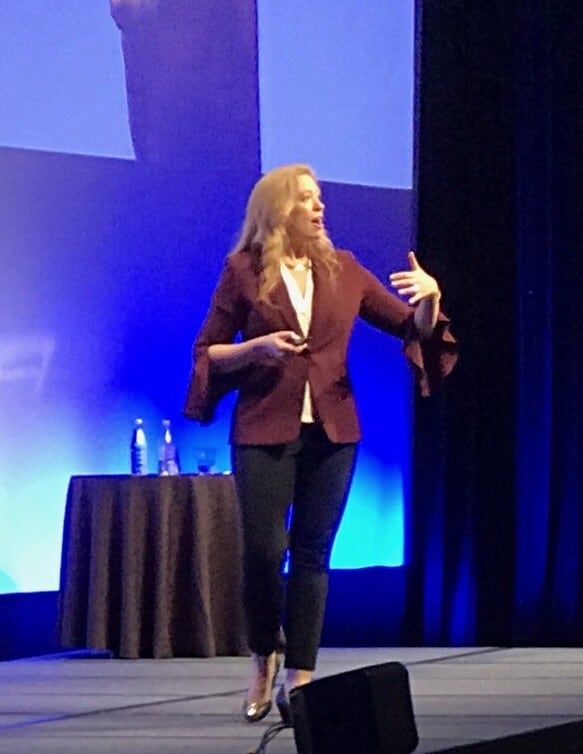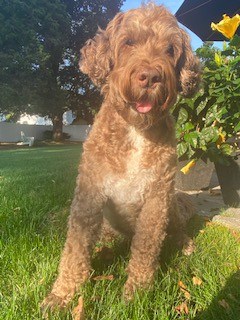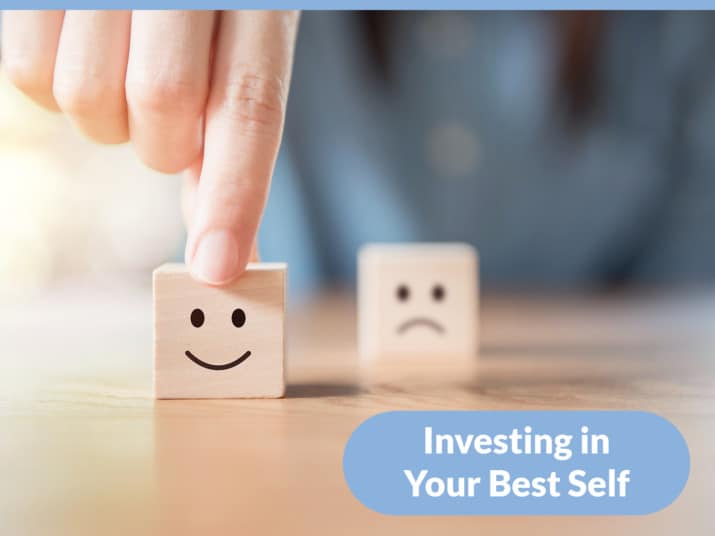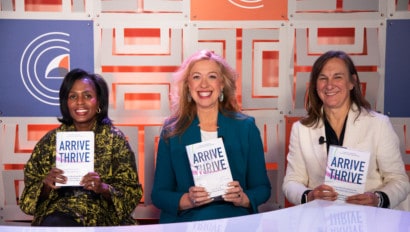Practice #1: Investing in Your Best Self
Learn more about the 7 Impactful Practices.
By Susan MacKenty Brady, CEO of Simmons University Institute for Inclusive Leadership
In my last blog post, I posited that leading your life from the best part of you requires mindfulness, purpose, and intention. Pressures and stressors at home and work present themselves regularly. There are days (weeks? months?) where everyone else, and everything else, gets your energy first. You look around and see how the way you are navigating leadership may not be having the desired impact on you and those around you.
Time for a pulse check
If you did a pulse check on yourself right now, who are you as your most centered, best self? It is okay – even common – not to actually know. However, I think it’s imperative you find out.
Investing in your best self (Practice 1 of our new book Arrive and Thrive) encompasses leading and living your life from the optimal part of you. Once you know you at your best, the job at hand is to learn how to consciously, and with intention, return to your best self over and over.
Step 1: Getting to know you, at your best
As we discuss in Arrive and Thrive, start by exploring what your strengths and talents are, where you add value to others, what brings you joy and vitality, what well-being means for you, and understanding the self-care actions you need to take to truly thrive.
For me, I’m at my best self when I get to share with and inspire others how to invest in and return to their best self. Be that writing or speaking or coaching, it fills my cup to help others get out of their own way. In part, because it reminds me to do the same.

At my best, I am calm yet full of energy, I am in full respect with myself and others (not harsh or critical and assuming best intent), I seek to better understand by expressing curiosity (not reacting quickly), and I am thoughtful in word and action. My intention matches my impact.
How do you get to know you at your best?
Ask 10 people you trust in your professional and personal orbit how they would describe you at your best. Tell them that you’re looking to zero in on the value you add and your professional “brand.” The feedback might not match how you want to show up going forward, but it will give you a sense of what others see of you when they experience you at your best.
Aside from receiving feedback from others, think about two or three times in your professional life when you felt joyful – perhaps you were so engaged in what you were doing you lost track of time. What was it about these times that you think encapsulates you at your best? What was true about your mindset and your external circumstances? Who were you surrounded by?
Step 2: Returning to you at your best
Once you know you at your best, the job at hand is to learn how to consciously, and with intention, return to your best self over and over. Implicit in this notion is that it is impractical to think you will be able to lead your life from your best self every moment of every day. You need to find a centering practice that helps you hit pause, breathe and channel the best part of you.
Not being in our best-self zone is darn hard
I know all too well that life shoves you out of your best self – sometimes without warning – and how important it is to hone the practice of a “loving return” to these best parts of you and, ideally, as quickly as possible. In the last half of 2021, my beloved family dog (Nick -one of the greatest loves of my life) had to be put down, my first-born child (Caroline) set off for college and my dear step-father (David, a true parent to me for over 40+ years) died unexpectedly. Needless to say, I was NOT at my best. I was sad and grief-stricken and also extremely tired. It was all I could do to keep up with my professional responsibilities as the leader of Simmons University Institute for Inclusive Leadership.

I asked for help and grace and I was met with it and more. Friends and colleagues were my heroes and she-roes.
I also practiced what I preach to manage myself. I doubled down on my moment-to-moment practice of returning to the best part of myself. This means I didn’t indulge the critical part of me that, on top of feeling run down, feel I’m letting others down, nor did I indulge the frustrated part of me that is annoyed with my youngest daughter for not cleaning up after herself when asked – when she too is grieving and adjusting to change.
My colleagues and I at the Institute have developed the Best Self Centering Practice®. There are four easy steps:
- Notice (that you’re not in your best self)
- Breathe (take pause so you don’t run the risk of saying or doing something that isn’t ideal)
- Channel Empathy (bring compassion to the situation and see ourselves and others as worthy of respect)
- Explore (seek to better understand what is going on for you and what might be true for another)
My co-authors and I dive deep into Practice 1 of Arrive and Thrive about Investing in Your Best Self. In that practice, we offer tools to get to know you at your best, and tips about how to use the Best Self Centering Practice.
At its core, knowing and returning to my best self is a practice of love. I use this practice daily (sometimes, multiple times a day!) Won’t you join me?
Next up:
Join Janet, Lynn and me as we share more about these practices and how they have impacted our life and leadership journey. Be on the lookout for Janet’s blog on Inspiring a Bold Vision and Lynn’s blog on Committing to the Work of the Inclusive Leader™. Please also join our author trio as we celebrate the official book launch at the Simmons Leadership Conference, “Cultivating Courage & Connection” featuring Simone Biles, Amanda Gorman and Brené Brown. April 13.
This article, originally published on March 10, 2022, is part of a LinkedIn series in conjunction with Simmons University’s Dr. Lynn Perry Wooten and Deloitte’s Janet Foutty highlighting essential practices for thriving in leadership. It is based on our upcoming book “Arrive and Thrive, 7 Impactful Practices for Women Navigating Leadership.’ Pre-order your book today and join the Arrive and Thrive Movement! Stay tuned!



